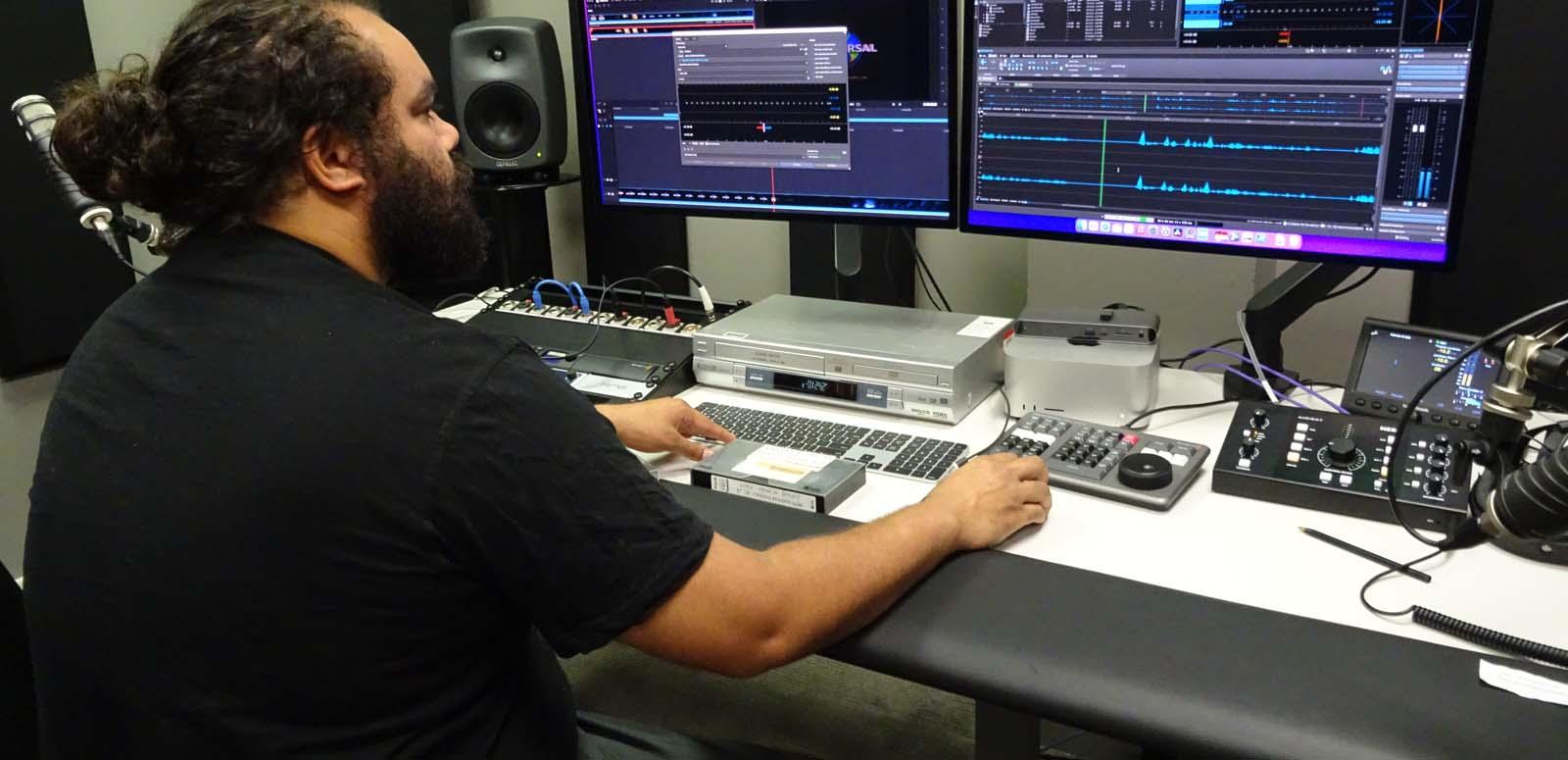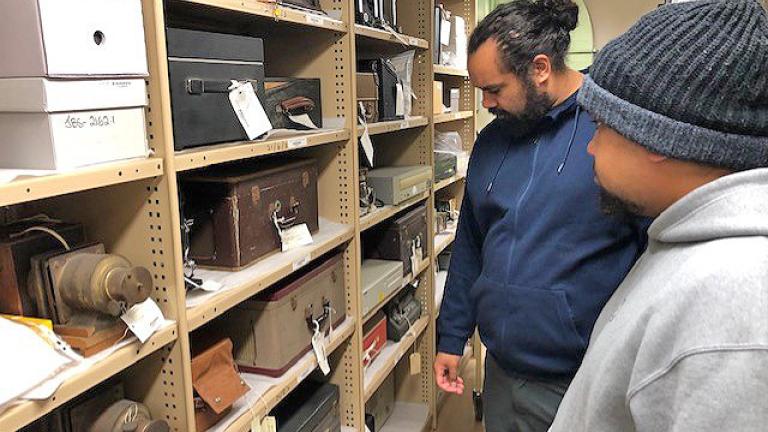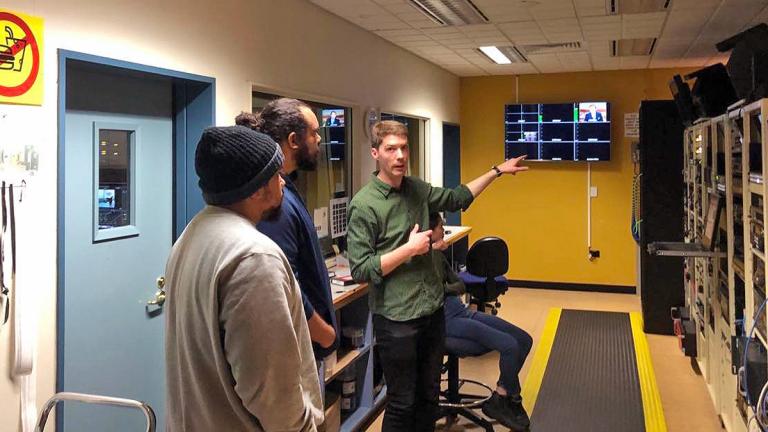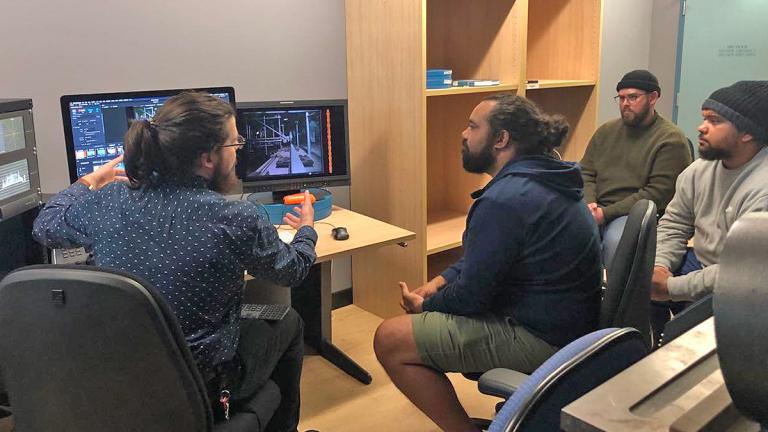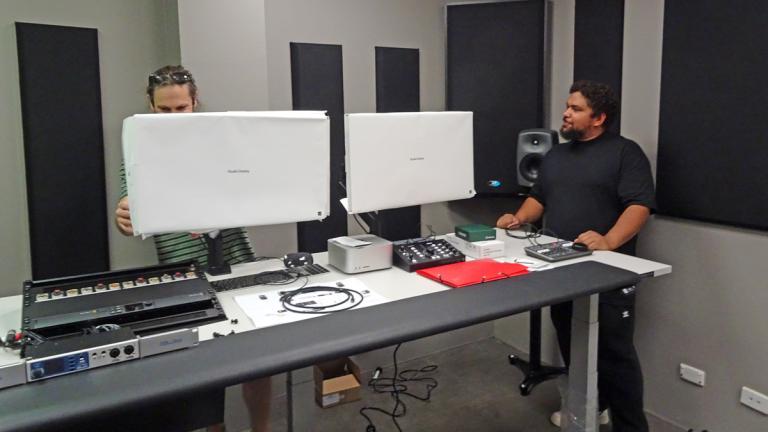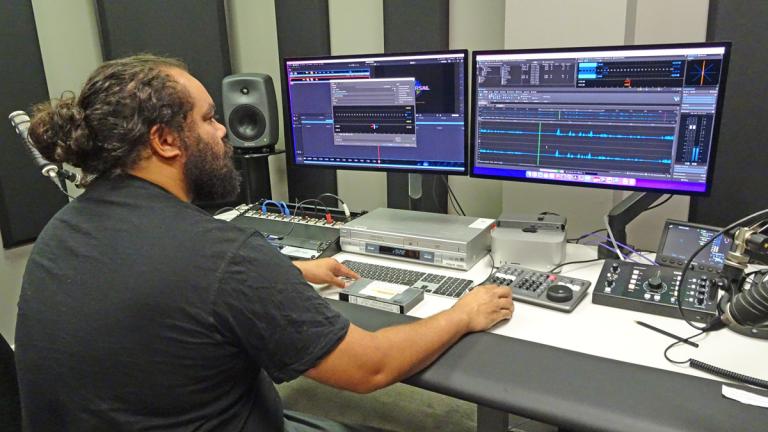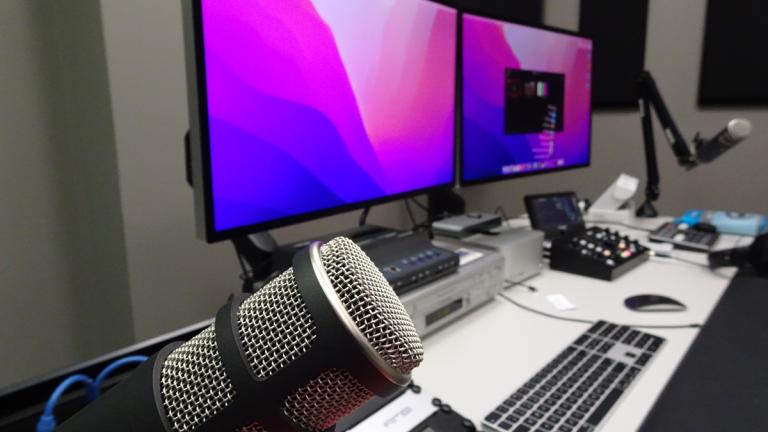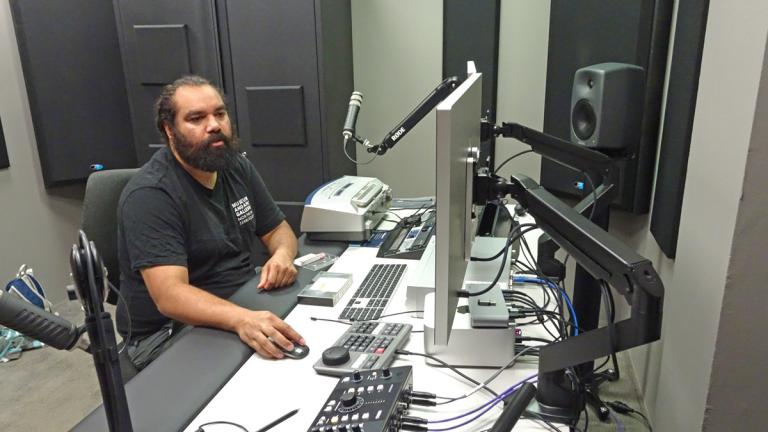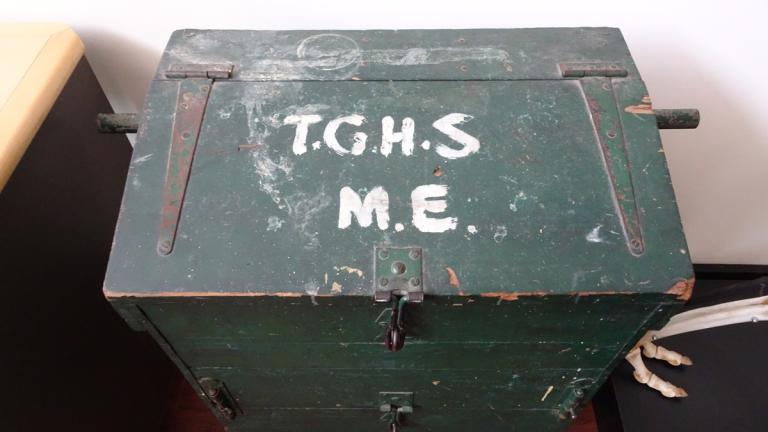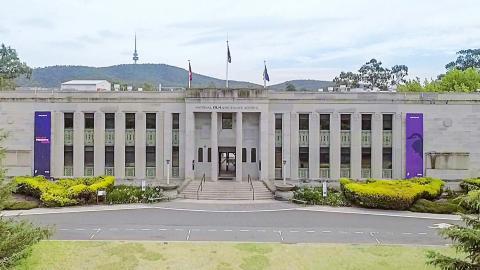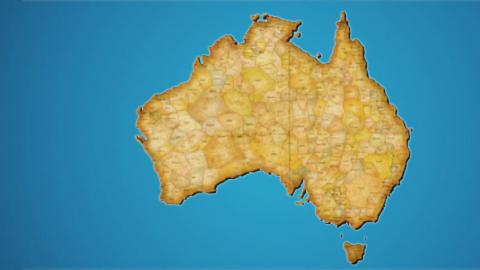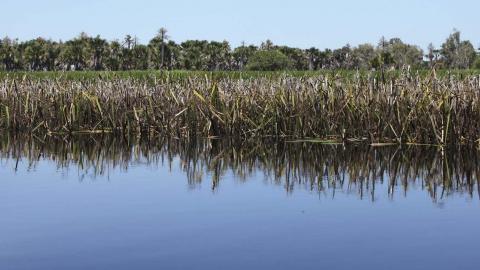WARNING: Aboriginal and Torres Strait Islander viewers are advised that this page may contain images and/or audio of deceased persons.
Preserving The Strehlow Collection
The NFSA has been working with Traditional Owners and the Strehlow Research Centre in a co-designed project to preserve and digitise at-risk films and audio recordings from the Strehlow Collection, one of the most important collections relating to Indigenous ceremonial life in the world.
The digital preservation of this collection is vital for continued cultural maintenance within Central Australian Aboriginal communities and the revitalisation of cultural practices and traditional language.
Learn more about the Central Australian Aboriginal Digitisation Project in the video below:

